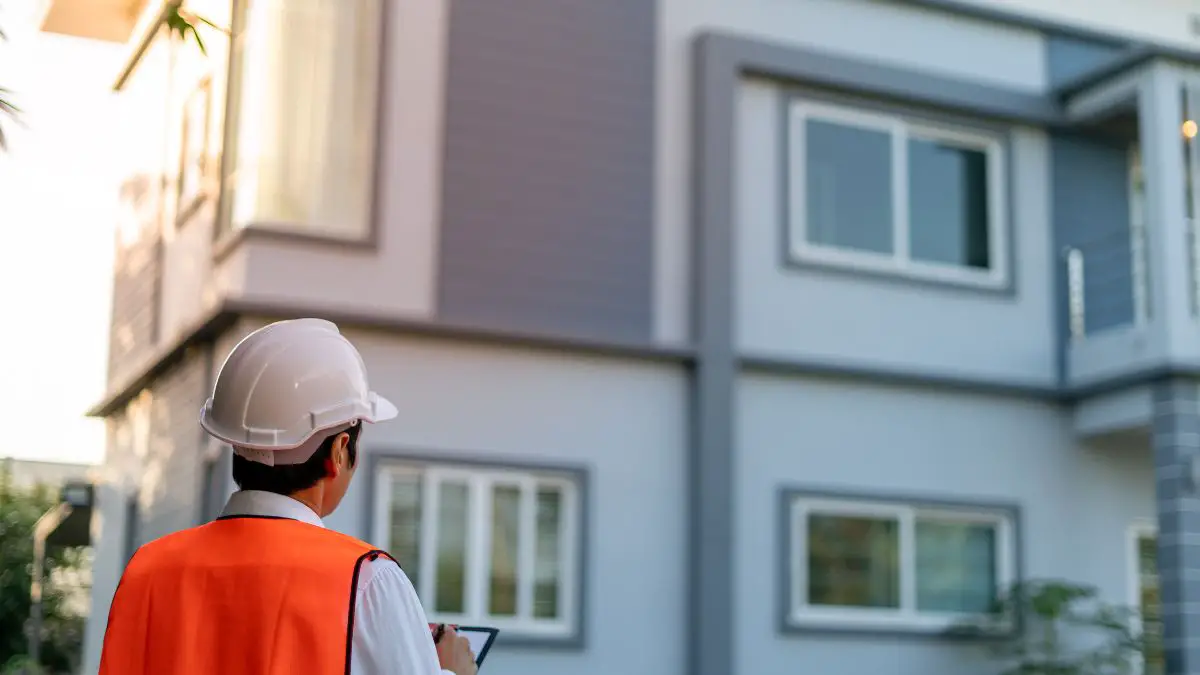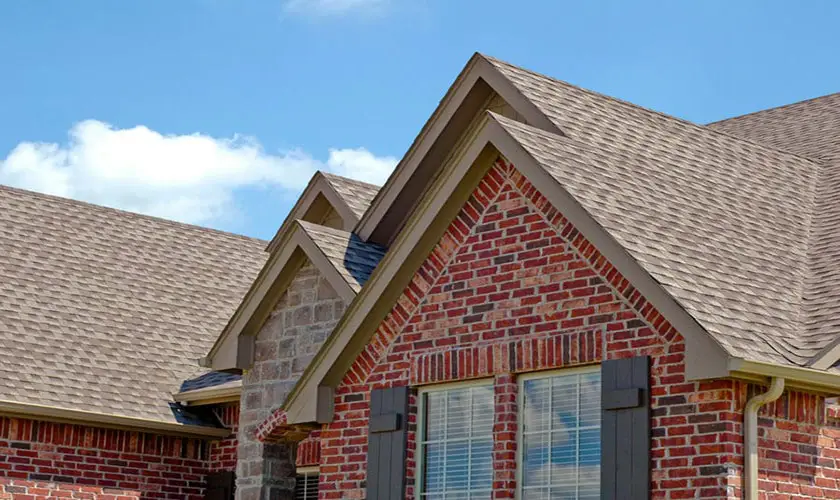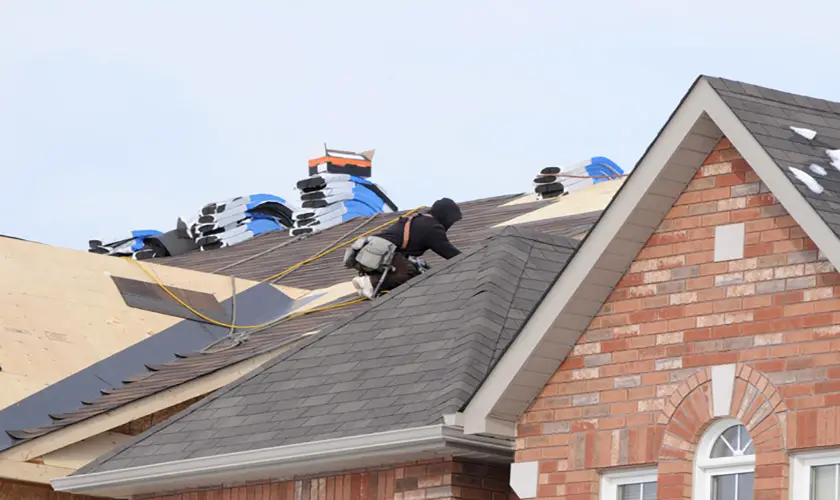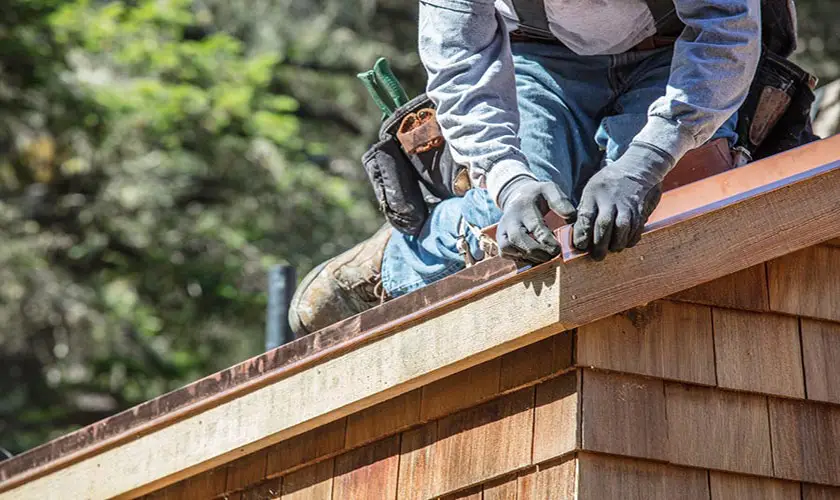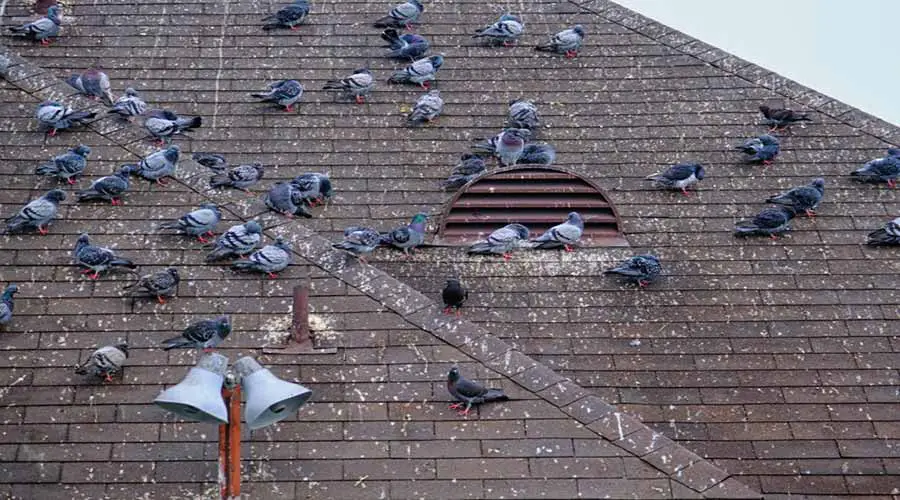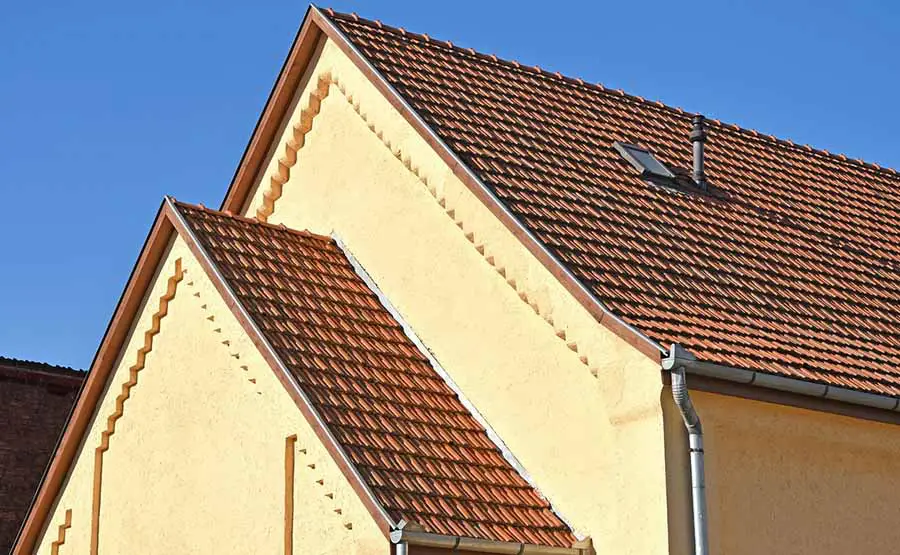
Steep roofs have a pitch greater than 9 inches in height for every 12 inches across (9/12). Although many people avoid building or buying a home with a steep roof, there are many advantages to this type of roof.
Steep roofs almost always last longer than flat or low-pitched roofs. Less water, snow, and debris can accumulate on a steep roof, significantly contributing to their longer lifespan. It is also easier to spot damage on a steep roof, and they’re easier to maintain than many other roof designs.
But that’s not all there is to know about steep roofs. Check out our reasons why a steep roof lasts longer, the differences between a steep and a low pitched roof, reasons for choosing a steep roof, and maintenance tips.
1. Reasons Why Steep Roofs Last Longer
Here are a few common reasons why steep roofs often last longer than roofs with a less aggressive pitch.
Less Accumulation of Debris
Lower pitched roofs tend to gather much more debris than steep roofs. Leaves and branches from trees will not accumulate as quickly on steep roofs as the pitch will cause the debris to slide off the roof.
Less Accumulation of Water
Much like debris from nearby trees, water will also efficiently run off a steep roof. Water that pools on a roof can cause damage leading to expensive and potentially dangerous structural issues. Low-pitched roofs are much more susceptible to water damage than steep roofs are.
Less Accumulation of Snow
Snow and ice melt faster on a steeply pitched roof, helping to reduce the amount of moisture and potential rot. Snow accumulation on your roof can be a hazard if it falls off all at once and can cause damage to your eaves system.
Increased Energy Efficiency
If you have a steep roof, you can utilize a cold roof system. A cold roof means your attic floor has insulation on top of it, and the air between the insulation and the roof remains cold. This type of system allows for good airflow into the eaves and out of the ridge. It will also help prevent ice build-up on your roof, reduce your cooling costs if you live in a warm environment, and minimize damage to your roof.
Easier Identification of Roof Damage
Often we do not know about damage to our roof before it is significant and results in a leak or other issue. A routine roof inspection is not something the average person performs, and if your roof is low pitched or flat, it is difficult to see damage from the ground. It is much easier to see any wear and tear or other points of concern from the ground with steep roofs.
More Attic Storage Space
Unlike a low-pitched roof, a steep roof will allow for more living or attic storage space in your home. Depending on the pitch of your steep roof, there may be ample space to create rooms for storage, an extra bedroom, or a playroom for the kids.
Enhanced Curb Appeal
For many people, the visual appeal of a tall, steep roofline is unmatched by a lower roof style. A high, steep roof adds grandeur and is amenable to architectural details like dormers, ornate trim, and gables. A steep roof is a perfect place to showcase colored shingles and custom designs.
Increased Air Ventilation
Warm air trapped inside your attic can lead to roof damage. Steep roofs are specifically designed to efficiently move warm air out of the attic through a passive ventilation system called the ridge vent. This flow of air also helps to prevent ice build-up in the winter.
2. Steep Roofs vs. Flat Roofs
There are essentially three types of roof pitches to choose from: steep, flat, and those that fall in between the two extremes.
This video offers a great explanation of the three types.
Houses that typically have steep roofs include the following styles; Victorian, A-Frame, and Salt-Box. In particular, you can often find A-Frames and Salt-Box-style homes in areas with significant precipitation levels.
This photo of an A-Frame ski chalet is the perfect example of how snow slides down a steep roof. Located in Whistler, BC, Canada, this chalet gets its share of heavy snow and moisture.
When deciding what roof pitch is right for your home, it is a good idea to consider the advantages and disadvantages of a steep and shallow roof.
Advantages and Disadvantages of a Steep Roof
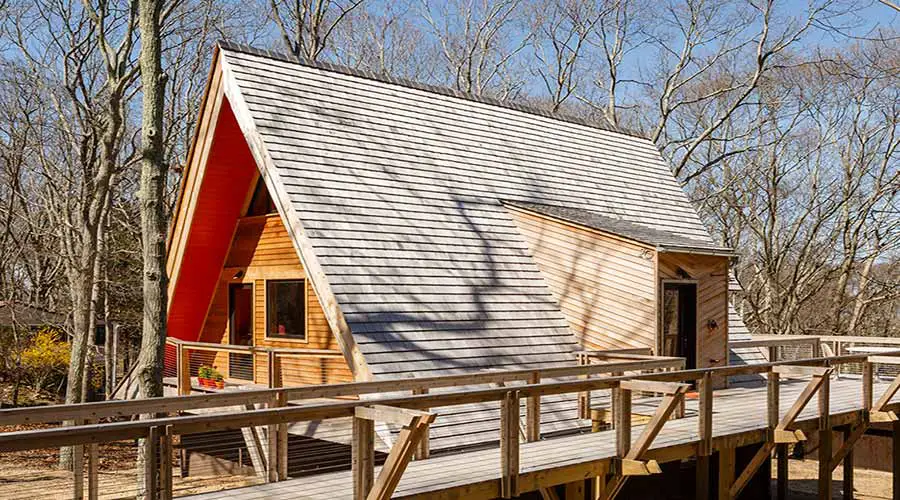
Advantages
- A steep roof will stand up to the elements longer than a lower-pitched roof. Steep roofs are compatible with climates that have an average to large amounts of precipitation. Rain and snow efficiently run off a steep pitch and are carried away from the house. This efficient water drainage discourages the formation of rot and mold on the roof surface.
- Debris from nearby trees also falls quickly off a steep roof, decreasing the presence of unwanted critters and moisture accumulation.
- Depending on the pitch, your steep roof can make up almost half of the exterior of your home. This would explain why ornate or colored shingles are found on the roofs of some old Victorian houses.
- A steep pitch provides an elegant, dramatic aesthetic which adds to your home’s curb-side appeal and architectural interest.
- The photo below illustrates how a steep roof can double as a canvas for artistic details. In this particular example, multi-colored shingles showcase the steep pitch of this roof, with orange shingles forming both a linear and a flower pattern easily visible from the ground.
- The steep roof also offers the perfect place for a turret-style tower and other interesting architectural features.
- Having a steep roof allows for the addition of living space in your home. If your roof is steep enough to accommodate a standing room in the attic, you can utilize that space as an extra bedroom or playroom for the kids.
Disadvantages
- The main disadvantage of having a steep roof is not having ample space to place utilities on the roof. Buildings with flat or low pitched roofs often store utilities such as HVAC units or ventilation systems on their roofs. Steep roofs are certainly not the best place to house utilities such as these.
- Other disadvantages of having a steep roof include a higher cost to build and block gutters from debris.
Advantages and Disadvantages of a Flat Roof
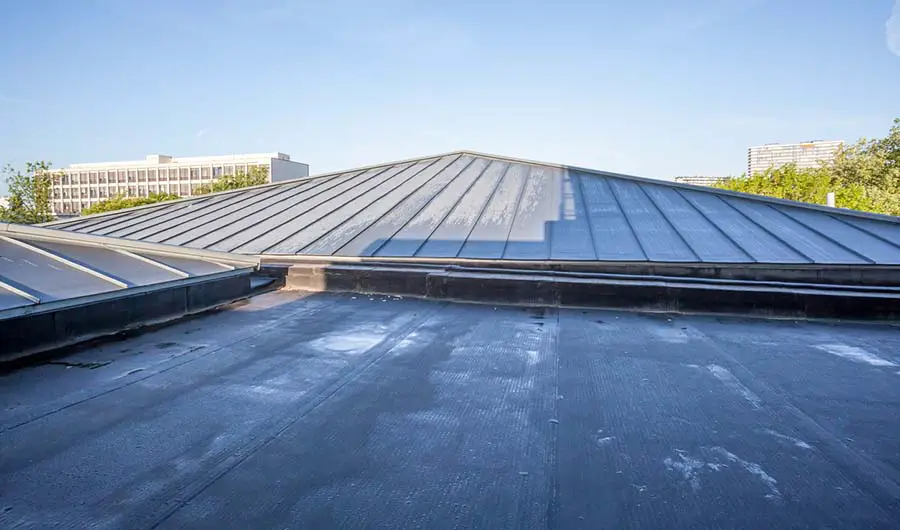
Advantages
- As previously mentioned, flat or low pitched roofs are great places for locating utilities such as HVAC units or ventilation systems. They are also good locations for patios, solar panels, and vegetable gardens.
- Flat or low pitched roofs have the advantage of a lower building cost as they require fewer materials to construct and are also easier to repair and maintain. For this reason, this type of roof is often found on large commercial buildings.
- They are also good choices for homes in warmer climates with low precipitation. Many traditional homes in Mexico, for example, have flat roofs.
Disadvantages
- The main disadvantage of having a flat roof is that it will not last as long as a roof with a steep pitch.
- Flat or low pitched roofs are prone to water and snow accumulation and can easily collect debris. They require regular inspection and removal of excess snow or water as well as clearing of debris.
3. Steep Roofs Cost More
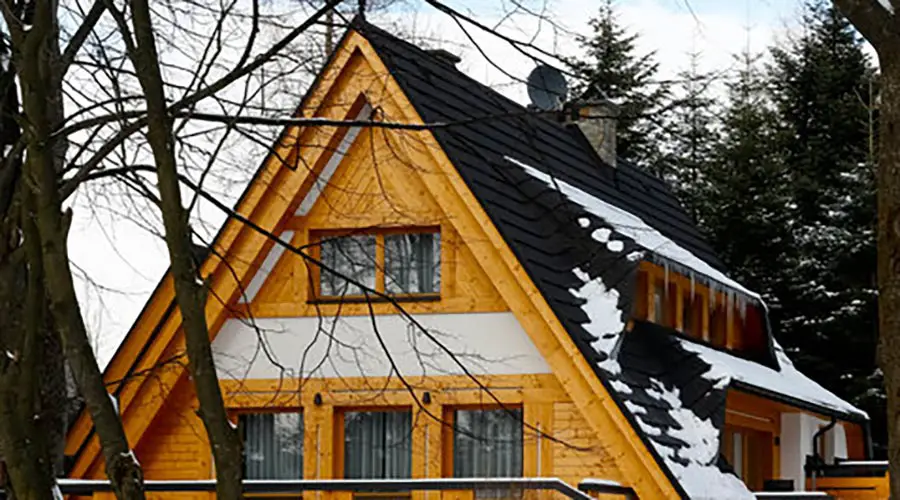
Steep roofs cost more to build than lower-pitched roofs. Any roof that has a pitch of 6/12 or greater will require more time, materials, and specialized labor.
There are several reasons why a steep roof costs more to build than a lower-pitched roof:
The steeper the roof, the more materials you’ll need. Generally, asphalt shingle costs are double on a 12/12 pitch compared with a 4/12 pitch roof.
Steep roofs are not easy to maneuver on. Roofers need to take extra time and care when working on a steep roof. This will translate into more hours needed to get the job done at an increased cost.
You may need to hire specialized labor when building a steep roof, as not all roofers have experience working on steep roofs. If this type of roofer is scarce in your area, you may be looking at paying a premium for their expertise.
In addition to experienced labor, building a steep roof also requires special equipment. Items like scaffolding and safety harnesses may be needed to complete the job safely and add to the project’s cost.
You may need extra materials to build a steep roof. If the design incorporates elements like dormers, for example, extra shingles will be required. You’ll probably need extra roofing nails to secure the shingles to the steep slope of the roof.
4. The Best Shingles for a Steep Roof
Whichever type of shingles you choose for your steep roof, you can rest assured that they will last longer than shingles found on lower pitched roofs. Reduced water and debris accumulation, as well as reduced exposure to UV rays on your steep roof, means that your investment in shingles will last longer.
Due to the potential longevity, many homeowners opt to spend more and decide to purchase cedar, slate, or clay shingles on their steep roofs. Slate and clay, in particular, will outlast asphalt shingles in most cases and, if installed on a steep pitch roof, will last a very long time.
Available since roughly 1910, asphalt shingles are the most popular shingles available today, and you’ll often find them on steep roofs.
Although they are common on steep roofs, asphalt shingles may require extra nails to secure them to the roof. This type of shingle is also more prone to the wear and tear of the elements and will become damaged before a slate or clay shingle.
5. Tips to Extend the Life of Your Steep Roof
As is the case with any other element of your home, having regular inspection and maintenance done on your steep roof will ensure that it lasts as long as possible.
A roofing professional should perform inspections and maintenance on a steep roof as the steep pitch can be hazardous for someone who does not have experience in this area. Special safety equipment is necessary to perform inspections and repairs on a steep roof, so it is best to leave the work to a professional.
Steep slope roofs generally require less maintenance than a low-pitched roof, but they still need regular attention. Having a professional inspect your roof annually is good practice for keeping your roof in good shape. It’s usually best to have inspections done in the spring or the fall.
The biggest threat to a steep roof is improper drainage. If water is not draining correctly off your steep roof, significant structural damage can occur.
Avoiding improper drainage means detecting and fixing any leaks. Missing tiles, shingles, or a host of other reasons can cause a roof leak. You should identify and fix any leaks as soon as possible to avoid additional costly damage.
Your inspector will also look for signs of aging on your steep roof. They will check to ensure that sealant around chimneys or flashing is still intact and not cracked or chipped.
Another essential element to maintaining your steep roof is to avoid water overflow from blocked gutters. If you cannot safely check and clear your gutters on your own, be sure to have a professional do the job. You can usually schedule gutter cleaning at the same time as an inspection.
Final Thoughts
Steep roofs last longer than flat or lower pitched roofs. They are more costly to construct than lower-pitched roofs, but they will provide increased value over time through limited replacement and maintenance costs.
A steep roof means increased curb appeal, added grandeur, and the opportunity to add architectural interest in the form of dormers, gables, or customized shingles.
Steep roofs allow homeowners to enjoy a well-ventilated space under the eaves, perfect for additional living space or the chance to reap the cost-saving benefits of a cold roof system.
If properly maintained, a steep roof will slough off rain and snow and stand up against UV rays, keeping homeowners dry and comfortable for many years.
Sources
- WILL A SHALLOW OR STEEP PITCHED ROOF LAST LONGER?
- 7 ADVANTAGES OF HAVING A STEEP PITCH ROOF
- Flat Roof Advantages and Disadvantages
- HOW ROOF SLOPE AFFECTS YOUR ROOFING COST



